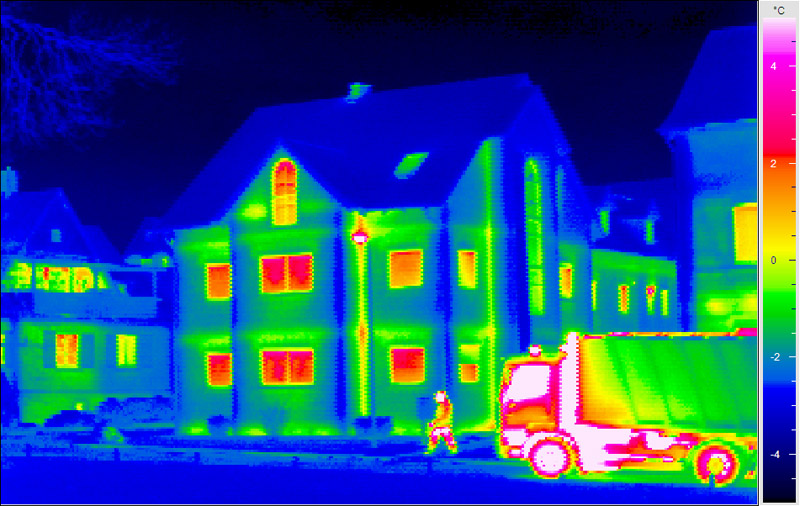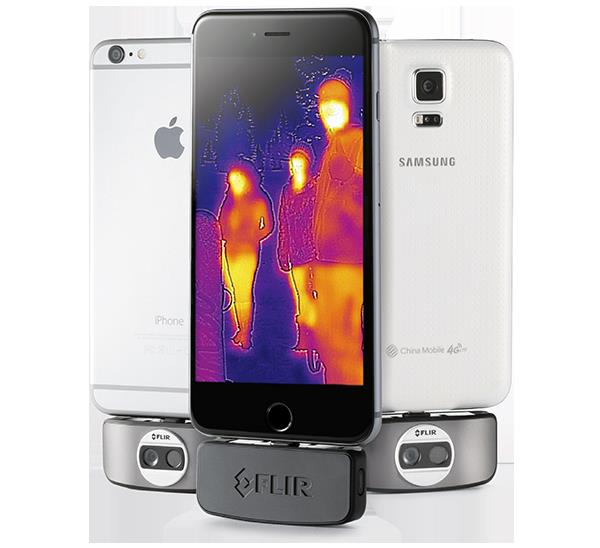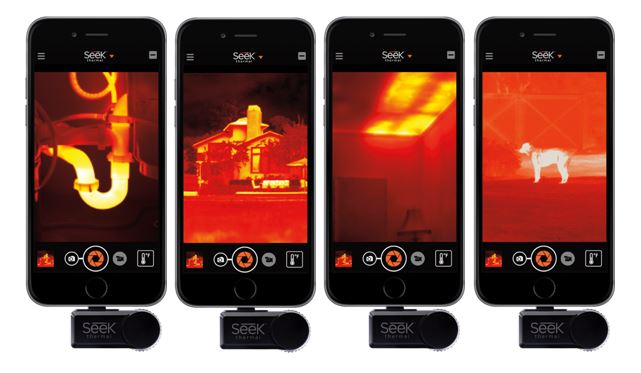
Today’s smartphones are incredible little machines—able to perform the function of ten gadgets within a single compact device. From professional-grade cameras and GPS navigation to automatic display orientation and screen brightness adjustment, the capability of such advanced operations can be accredited to the numerous sensors found within the handset. Sensors contribute to the ease of handling that we often take for granted. Notwithstanding, one sensor has the ability to further elevate the performance of smartphones— infrared (IR) sensors. Already a staple in iPhones for basic functions, the newest innovations in infrared chips have created highly purposeful and affordable thermal attachments for smartphones that add increased capabilities to an already jack-of-all-trades device.
Sensors have become increasingly useful in smartphone development, able to monitor three-dimensional movement and positioning of the device, changes in the ambient environment, and can even detect the unique fingerprint of a user.
Infrared sensors, for example, already offer a variety of practical uses and, as the technology becomes more ubiquitous, will further enhance available features. Two consumer smartphone Infrared-sensor attachments, the FLIR One and Compact by Sleek Thermal, allow smartphone users to reach the full potential of these nifty sensors.
 FLIR On e is a thermal imaging camera attachment for iOS and Android devices, allowing users to explore the world in a very unique way. Featuring a unique dual—thermal and VGA visible light—camera system, the device uses FLIR’s proprietary MSX technology to blend images from both cameras to create high-quality thermal images with enhanced detailed resolution. The non-contact infrared measurement system enables users to measure temperatures of any spot in a scene between -4°F and 248°F. Available for $250, FLIR One conveniently plugs into any smartphone containing either a lightning connector (Apple) or micro-USB (Android) port.
FLIR On e is a thermal imaging camera attachment for iOS and Android devices, allowing users to explore the world in a very unique way. Featuring a unique dual—thermal and VGA visible light—camera system, the device uses FLIR’s proprietary MSX technology to blend images from both cameras to create high-quality thermal images with enhanced detailed resolution. The non-contact infrared measurement system enables users to measure temperatures of any spot in a scene between -4°F and 248°F. Available for $250, FLIR One conveniently plugs into any smartphone containing either a lightning connector (Apple) or micro-USB (Android) port.
 Manufactured by Sleek Thermal , the newest Compact thermal camera line for smartphones starts at $250 and works with both iPhone and Android top models. The portable attachment combines powerful thermal insight with a 206×156 sensor and offers a 36-degree wide field of view. The advanced infrared technology lets users see thermal images day or night and has a detection range of a few inches to as far as 1,000ft in the standard model.
Manufactured by Sleek Thermal , the newest Compact thermal camera line for smartphones starts at $250 and works with both iPhone and Android top models. The portable attachment combines powerful thermal insight with a 206×156 sensor and offers a 36-degree wide field of view. The advanced infrared technology lets users see thermal images day or night and has a detection range of a few inches to as far as 1,000ft in the standard model.
So why do all smartphones need an IR sensor? Besides the obvious reason of not wanting to butt-dial with your face, thermal imager attachments provide useful insight into the detection of energy loss in homes by identifying hot and cold sports. Inspection with thermal imaging can detect everything from air leaks, missing or damaged insulation, inefficient HVAC systems, and even poor home construction. Especially useful for contractors, IR sensors allow for quick and accurate home inspections.
Other uses of IR sensors include home or pet surveillance at night, or a useful hunting companion when identifying possible targets, and even checking the temperature of a grill to monitor perfect searing temperature.
As IR sensors are already a staple in smartphones, it makes sense to expand the application of this familiar and underexploited technology to bring thermal imaging to phones.
Sources: Popular Mechanics , Stanford , Phone Arena
Advertisement
Learn more about Electronic Products Digital





